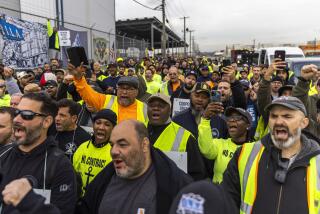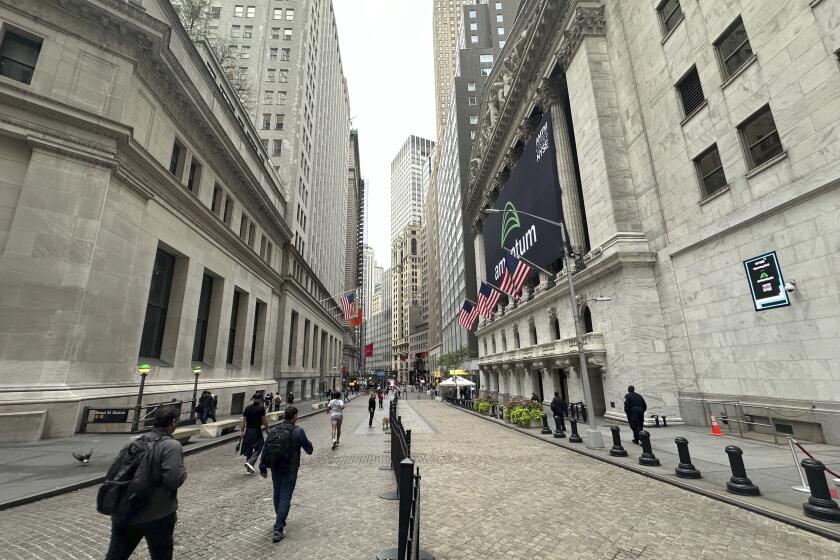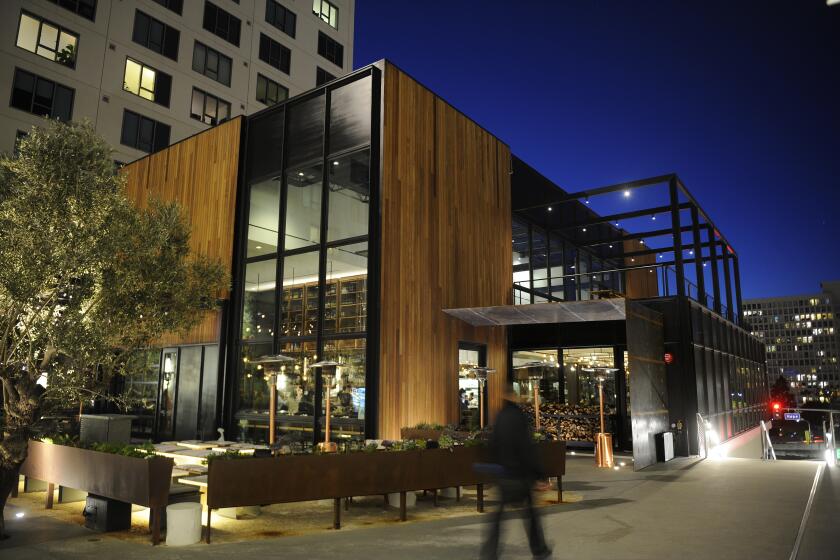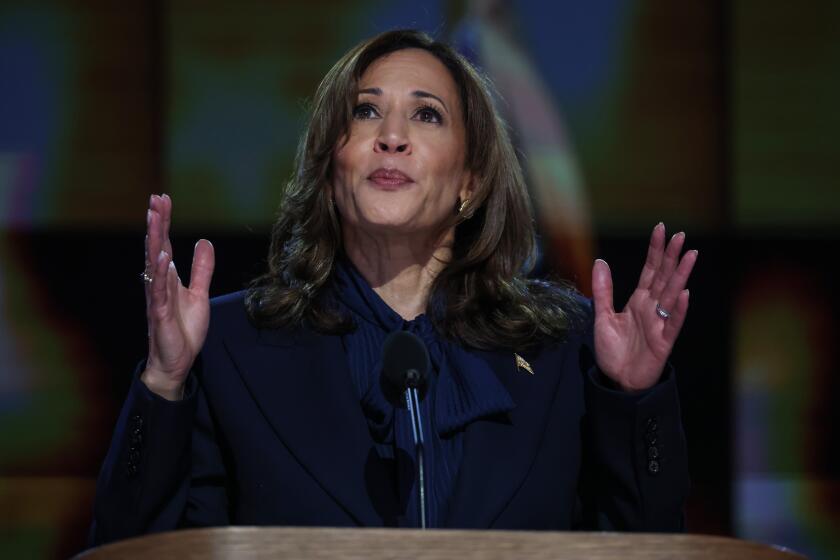Anti-Union Controllers Behind New Movement
At the heart of a union movement among air traffic controllers are many of the people who helped break a bitter strike in 1981 that led to the firing of thousands of unionized controllers.
Only six months after controllers voted by a 7-3 margin to be represented by a union, the new National Air Traffic Controllers Assn. claims about 5,000 members, two of every five controllers eligible to join.
Gary Molen and William Faville are typical of activists within the union who only a few years ago dismissed collective bargaining as at best unnecessary.
“I’m from a very anti-union background,” Faville said during a break in the fledgling union’s three-day organizing convention, which attracted nearly 300 delegates from air traffic control centers and towers around the country last week.
He said that his father and uncle own non-union businesses and that his grandfather is “probably rolling over in his grave” because his grandson has become the union’s regional representative from Alaska.
Molen, 46, a native of Montana, said his father was a railroad union member, “but I don’t ever remember the word ‘union’ being used in the house.”
Molen, a controller since 1968 who has worked in Salt Lake City for 10 years, is Faville’s counterpart in the union’s Northwest mountain region.
The controllers’ return to union activism stems from an array of gripes and concerns, delegates said.
The complaints include: having to work with poor and archaic equipment, little involvement in Federal Aviation Administration decision making, steadily increasing traffic loads, “vindictiveness” by some bosses and petty rules such as dress codes that in one case prohibited controllers from wearing jeans unless they were of a certain designer label.
On Aug. 3, 1981, more than 12,000 controllers, or three-fourths of the work force, walked off their jobs in a dispute over working conditions, safety and wages. A few hundred returned, but 11,400 were fired by President Reagan for striking illegally. Their union, the Professional Air Traffic Controllers Organization (PATCO), was forced into bankruptcy and decertified.
The FAA still does not have as many fully trained controllers as it wants and has imposed six-day workweeks at some of the busiest air traffic centers and towers. The FAA recently had 12,368 controllers handling aircraft plus 1,695 trainees, compared to 16,300 controllers before the strike.
John Leyden, a senior AFL-CIO official who was president of PATCO in the 1970s, says many of the current complaints were issues in 1981.
“It’s an indictment of a management who had an opportunity over a six-year period to do something,” Leyden said in an interview.
A major new concern has also arisen with the FAA’s institution of random drug testing. Some controllers are likely to come under suspicion because of false results and need union support, organizers said.
After the strike, said Fred Gilbert, a Chicago controller vying in this summer’s election to become the new union’s first president, “I believed with all my heart we’d seen the last need for a union.”
Gilbert, 46, recalls being called a “turncoat” by pickets when he worked through the strike. He now says he feels betrayed by management.
“Many of the people who saved the system are now being ignored,” he said.
Memories of the 1981 walkout and the wounds that remain open dominated the union’s convention here.
“The guy who was the best man at my marriage won’t even talk to me. That’s how deep the strike went,” Molen said.
To assure prospective members that there will not be a repeat of the 1981 debacle, organizers stress that they oppose confrontation.
“The union (must) accomplish its goals without radical militancy, without putting our careers as controllers into jeopardy, without compromising our dedication to assure safe and efficient flow of air traffic across this nation,” said Steve Bell, a controller for New York, who is considered a leading contender for union president.
More to Read
Inside the business of entertainment
The Wide Shot brings you news, analysis and insights on everything from streaming wars to production — and what it all means for the future.
You may occasionally receive promotional content from the Los Angeles Times.








